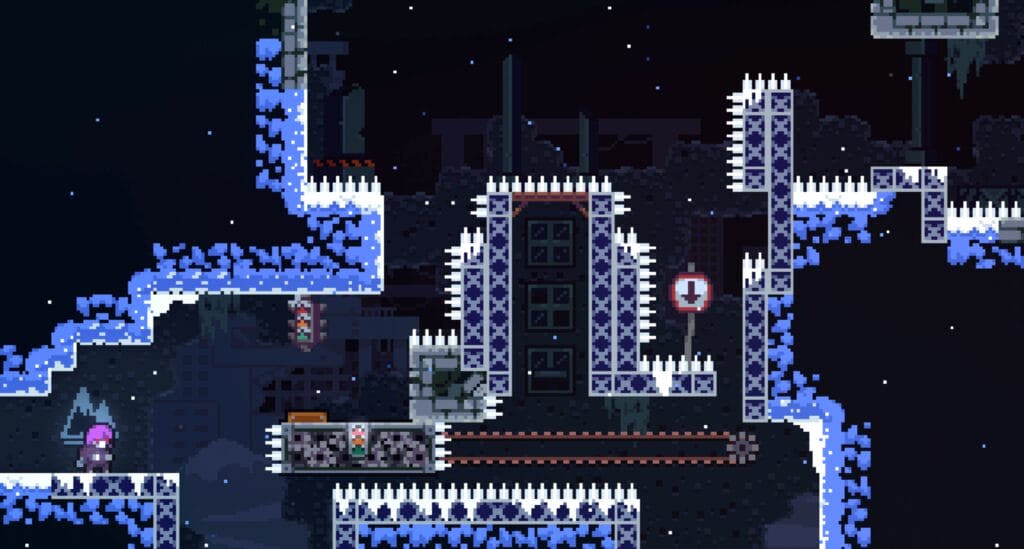Todd Kerpelman shares some of the common game design mistakes he made from his years as a game designer. Because chances are, you’re making them, too. Also, there’s mayonnaise involved.
Learning from Failure: 3 Common Game Design Mistakes
Game design is hard. Even experienced designers make mistakes. But failures teach valuable lessons if you know where to look. After leading design at Pogo Games, I noticed 3 common mistakes hampering many games:

Mistake #1: Kitchen Sinking the Design
“Kitchen sinking” means overloading your game with features but lacking a strong core mechanic. It happens when we lack confidence in the basic gameplay loop.
Symptoms include:
- Excess powerups, characters, modes etc.
- Overreliance on “advanced” mechanics like risk-reward
This clutter confuses players instead of exciting them.
Why It Happens
Designers kitchen sink games because:
- The core mechanic feels boring
- They prefer advanced theories over fun
- It’s easier to add stuff than fix the core
The root issue is that the base gameplay just isn’t fun enough. No amount of chrome can polish a dull game.
Solutions
:bulb: Simplify first, decorate later. Remove all extras and playtest the core mechanic. Make that fun first before adding to it.
:bulb: Prioritize game-changers over upgrades. A good powerup fundamentally changes the gameplay, not just improve stats.
:bulb: If an “extra” is critical, make it the core. Bonus levels often show the most fun part of the game. Lean into that strength.
“”The simplest way to have a good idea is to have a lot of ideas.” – Linus Pauling””
Kitchen sinking is common but fixable. Build on a strong base before decoration.

Mistake #2: Clinging to Clever Ideas Too Long
It’s tempting to fall in love with an idea, even when it hurts the game. I call this “holding the mayo”.
For example, maybe I designed a really innovative timed level mechanic. It’s so clever! But it ruins the scoring, powerups, and ending. My instinct says stick with the time limit because it’s such a novel concept.
In reality, one clever solution shouldn’t handcuff the whole system. As they say, sometimes you must “kill your darlings.” Prioritize the whole over pet ideas.
Why It Happens
Designers cling to ideas because:
- We’re proud of clever solutions
- Parting with hard work is difficult
- It seems integral to the vision
But “perfect” features can limit overall fun. Good designers know when to pivot.
Solutions
💡 Check your priorities. What matters most – innovation or enjoyment? Cool ideas must serve players first.
💡 Watch for handcuffs. If one concept restricts overall design, it may not be worth it. See the big picture.
💡 Remember cuts can be temporary. Removing ideas completely is hard. You can always bring them back later.
“”Kill your darlings, kill your darlings, even when it breaks your egocentric little scribbler’s heart, kill your darlings.” – Stephen King””
Clever solutions deserve praise but gameplay rules all. Be ready to move on from even your best ideas.

Mistake #3: Dismissing “Bad” Suggestions
Playtesters often share ideas that seem clearly wrong for your game. But angrily rebutting them misses the point.
Imagine your climbing system is lackluster. A user suggests adding grappling hooks. Your first thought is probably “that’s stupid because…” But their goal isn’t a perfect solution – it’s pointing out a real issue. Dismissing them just silences helpful feedback about climbing needing work.
Why it Happens
Designers dismiss suggestions because:
But this wastes opportunities to improve.
Solutions
💡 Hear the problem, not just the solution. Suggestions identify weak areas, even if the exact fix is bad.
💡 Lead users to solutions. Don’t just say “no way!” Ask follow ups to uncover better alternatives.
💡 Admit imperfection. Users spot holes because games have holes. Stay humble and keep improving.
“”Criticism may not be agreeable, but it is necessary. It fulfils the same function as pain in the human body. It calls attention to an unhealthy state of things.” – Winston Churchill””
Users suggest bad solutions because they want to help. Listen past the ideas to the real issues.
Key Takeaways
Learn to spot these issues in your own design process. Stay focused on what matters most – making games people love to play.
Focus on nailing simple mechanics first. Be willing to kill clever solutions if they hurt the game. And pay attention when users share ideas – they often reflect bigger weaknesses waiting for attention.
Conclusion Common Game Design Mistakes
Creating great games is a process of constant refinement. My biggest lessons came from projects that failed. Through disappointment and mistakes, I learned to recognize problematic patterns derailing many designs.
None of these issues make you a bad designer – they are common traps teams of veterans still slip into. But now that you know what to watch for, hopefully you can catch problems sooner for yourself or others. Game creation often feels like an intangible art. Keeping core principles like those above in mind makes the magic feel more understandable and achievable.
Remember, advice usually comes from experience, and experience often comes from bad decisions. Making games is much harder than playing them – but the journey gets a little smoother when we help each other.


















